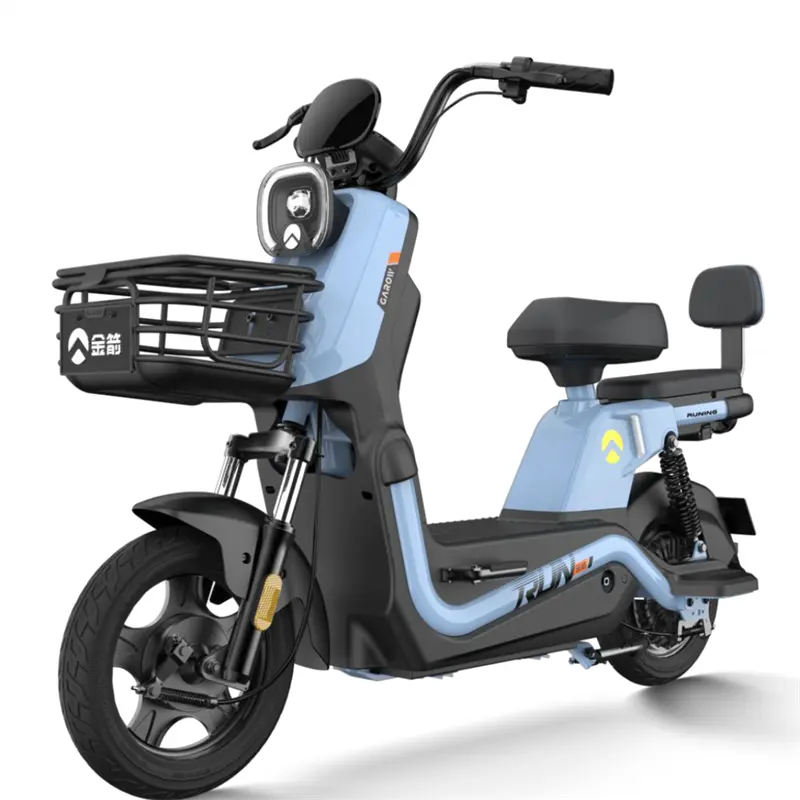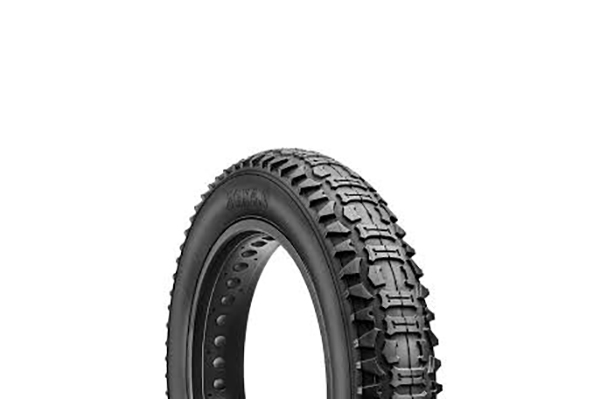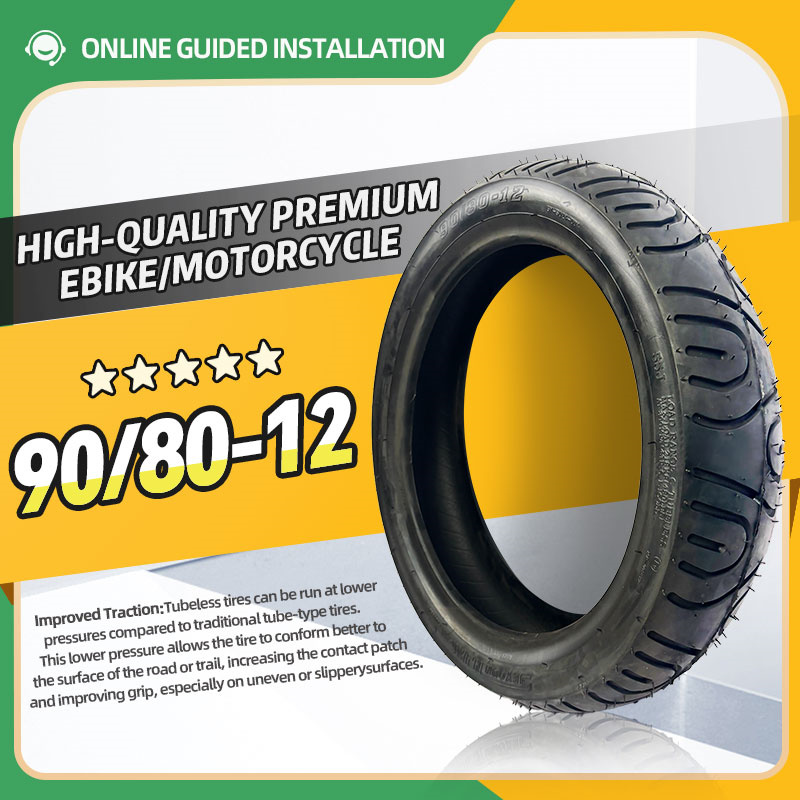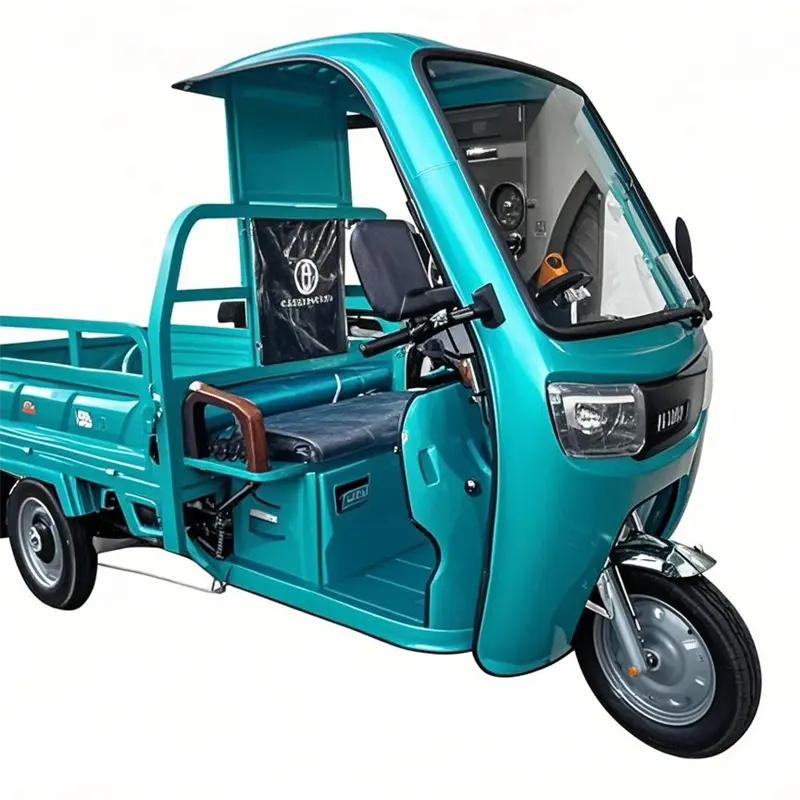As a manufacturer specializing in electric mobility for over a decade, I’ve had a front-row seat to the incredible evolution of electric bikes. One of the most significant debates that both consumers and distributors face is the choice between a fat tire and a regular tire. The type of tire you choose fundamentally changes the bike’s performance, feel, and purpose. This article is your comprehensive guide, drawing from my experience as a factory owner, Allen, to help business partners like David Miller in the USA and beyond make informed purchasing decisions. We’ll break down the technical differences, explore the practical benefits, and address the key concerns that distributors have when sourcing these products. This is more than just a comparison; it’s an insider’s look into what makes each tire type unique, ensuring you invest in the right e-bikes for your target market.
What Exactly Defines a Fat Tire on an E-Bike?
When we talk about a fat tire, we are referring to a specific category of oversized tires. Generally, a bicycle tire is considered a fat tire if it has a width of 4.0 inches or more. These substantial tires are instantly recognizable and give the bike a rugged, almost motorcycle-like appearance. The core design philosophy behind a fat tire is to maximize the contact patch—the part of the tire that actually touches the ground. This increased surface area is the key to their unique capabilities.
These oversized tires are mounted on wider rims to support their massive volume. From a manufacturing perspective, building a fat tire bike isn’t just about swapping the wheels. The frame and fork must be specifically engineered with much wider clearances to accommodate the sheer size of the tire. This robust construction is essential for ensuring safety and durability, especially when paired with the power of an electric motor. The result is a bike built for stability and conquering terrain that would stop a standard bike in its tracks. A fat tire is not just a component; it’s the defining feature of a unique type of electric bike.
The large volume of air inside a fat tire acts as a natural form of suspension. This allows the tire to absorb shocks and vibrations from uneven surfaces far more effectively than a standard tire. This feature is one of the primary benefits of fat tires, providing a surprisingly smooth and comfortable ride even without sophisticated suspension systems. The ability of the fat tire to deform and envelop obstacles rather than bouncing off them is what sets it apart.

How Do Regular E-Bike Tires Compare?
In the context of the fat tire vs regular tire debate, “regular tires” encompass a wide range of tire widths, but they are all significantly narrower than a fat tire. For most commuter and mountain bike e-bikes, regular tire widths typically fall between 1.95 and 2.3 inches. These types of tires are the industry standard for a reason: they represent a balanced approach to performance, offering a great blend of efficiency, agility, and versatility for a variety of common riding conditions.
Unlike the massive fat tire, a regular tire is designed for lower rolling resistance on smoother surfaces like pavement or packed dirt trails. Their narrower profile cuts through the air more efficiently and requires less energy from both the rider and the motor to maintain speed. This is a crucial factor for riders who prioritize speed and efficiency on their daily commute or on long-distance rides. While they don’t have the same shock-absorbing volume as a fat tire, high-quality regular tires are often paired with advanced suspension systems on the bike frame to provide a smoother ride on rough terrain.
The primary advantage of regular tires lies in their responsiveness and lighter weight. A bike equipped with a regular tire feels more nimble and easier to maneuver, especially in tight turns or crowded urban environments. For many riders, this quick handling is preferable to the planted, steamroller-like feel of a fat tire bike. Furthermore, regular tires also offer a vast selection of tread patterns, compounds, and constructions, allowing a rider to fine-tune their bike for specific disciplines, from slick tires for road bikes to knobby treads for cross-country mountain biking. The choice of tire can dramatically alter the riding experience.
What Are the Key Benefits of Fat Tires for an Electric Bike?
The single greatest advantage that fat tires offer is unparalleled traction and stability. The wide footprint of a fat tire dramatically increases the contact area with the ground. This means more grip on a wider variety of surfaces. This is one of the main benefits of fat tires. Whether you’re riding on loose gravel, wet leaves, sand, or even snow, the fat tire provides a level of confidence that regular tires simply cannot match. This excellent traction is particularly beneficial on an e-bike, where the motor’s torque can sometimes cause a narrower tire to spin out on loose surfaces.
Another of the key benefits of fat tire e-bikes is their inherent comfort. The large volume of air in a fat tire, often run at a lower tire pressure, acts as a natural cushion. This simple yet effective system smooths out bumps, cracks, and small obstacles on the trail or road. The tires act as a primary suspension system, absorbing shocks and vibrations before they reach the rider. This results in a significantly smoother ride, reducing fatigue on long journeys and making rides on rough terrain much more enjoyable. For riders who value comfort over outright speed, a fat tire is often the better option.
Finally, the versatility of a fat tire e-bike is a major selling point. These ebikes are true all-terrain vehicles. The same bike that provides a comfortable commute on Monday can be used to explore a sandy beach or a snowy forest trail on Saturday. This “do-it-all” capability is what attracts many riders. The ability of the fat tire to “float” over soft surfaces like sand and snow, where a regular tire would sink and get stuck, opens up a whole new world of adventurous riding possibilities. A fat tire e-bike truly empowers a rider to go almost anywhere.

Are Fat Tire E-Bikes Slower Than Regular Ebikes?
This is a common question, and the answer is nuanced. On a perfectly smooth, paved surface, a fat tire e-bike will generally have a higher rolling resistance than a bike with regular tires. The wider tire creates more friction and requires more energy to move. However, the “e” in e-bike is a great equalizer. The electric motor provides assistance that easily overcomes this increased resistance, making the perceived difference in effort minimal for the rider. While a professional cyclist on a non-electric road bike would be significantly faster, the powerful motors in modern ebikes have made this gap much smaller for the average user.
Where the tables turn is on uneven terrain. On a bumpy road or a gravel path, a regular tire may bounce and lose contact with the ground, creating inefficiency and slowing the bike down. A fat tire, with its lower air pressure, conforms to the surface, maintaining contact and momentum. In these real-world conditions, a fat tire e-bike can often be just as fast, if not faster, than its regular-tired counterpart. The conversation shifts from pure speed and efficiency to effective and consistent power delivery over challenging ground.
Ultimately, the choice comes down to the rider’s priorities. If the goal is maximum speed on pristine pavement, a sleek e-bike with narrower tires will have the edge. However, for most riders, the slight top-speed penalty of a fat tire is more than compensated for by the immense gains in comfort, stability, and all-terrain capability. The fat tire is less about winning a race and more about enjoying the journey, wherever it may lead. It’s about creating a stable and powerful riding experience.
Is a Fat Tire Bike Practical for Pavement and Daily Commutes?
Absolutely. While they are champions of off-road riding, fat tire e-bikes are surprisingly well-suited for urban environments and daily commutes. The main reason is comfort. City streets are rarely perfectly smooth; they are littered with potholes, cracks, and manhole covers. A fat tire smooths over these imperfections, turning a jarring commute into a pleasant cruise. The enhanced stability also provides a feeling of safety and security when navigating traffic and unpredictable road conditions.
The superior traction of a fat tire is another major benefit in the city. Rain-slicked streets, wet leaves in the fall, or even an unexpected patch of gravel are less of a concern. The wider tire provides a more secure connection to the pavement, reducing the risk of slipping, especially during braking or cornering. This added safety margin is invaluable for a daily commuter, making the fat tire e-bike a reliable choice regardless of the weather conditions.
Of course, there are trade-offs. A fat tire bike is typically heavier and larger than a standard commuter ebike, which can make it more challenging to carry up stairs or store in a small apartment. The tires also produce a noticeable hum on pavement, which some riders may find distracting. However, for many urban dwellers, these minor inconveniences are a small price to pay for the supreme comfort and all-weather confidence that a fat tire e-bike delivers. It transforms the urban landscape into a personal playground.
How Does Tire Pressure Impact the Riding Experience of a Fat Tire E-Bike?
Tire pressure is arguably the most critical and most frequently overlooked adjustment on a fat tire e-bike. Unlike regular tires, which operate in a relatively narrow pressure range (e.g., 40-65 PSI), fat tires are designed to perform across a much broader spectrum, often from as low as 5 PSI to around 30 PSI. The ability to fine-tune this air pressure is what unlocks the true versatility of the fat tire. Changing the pressure fundamentally alters the tire’s behavior.
For riding on soft surfaces like sand or snow, the rider should lower the tire pressure significantly (e.g., 5-10 PSI). This allows the tire to flatten out, creating a much larger footprint. This increased surface area is what allows them to float over the loose ground instead of digging in. On the other hand, for riding on hard-packed dirt or pavement, increasing the tire pressure (e.g., 20-25 PSI) will make the tire rounder and firmer. This reduces rolling resistance, improves efficiency, and provides a more responsive feel.
Getting the tire pressure right is a game-changer for the riding experience. It requires a bit of experimentation, but a good floor pump with a gauge is an essential accessory for any fat tire e-bike owner. Learning to adjust the pressure based on the type of terrain for the day’s ride is the key to maximizing both performance and enjoyment. It’s the secret to making one bike feel perfectly tuned for any adventure.
For a Distributor, What Are the Sourcing Considerations for Fat Tire vs. Regular Tire Ebikes?
As a manufacturer, I work closely with distributors like David Miller, and I understand their key concerns. When deciding whether to stock a fat tire vs regular tire e-bike, the primary consideration is the target market. Is your customer base looking for adventurous, all-terrain capability, or are they urban commuters prioritizing agility and low weight? A fat tire e-bike appeals to the former, while an ebike with regular tires is often a better fit for the latter. Offering both types of tires can capture a wider audience.
Quality control is paramount. For a fat tire bike, this means verifying the frame and fork have been properly engineered for the added stress and width of the large tire. Weld integrity is crucial. For any ebike, the reliability of the motor and the safety of the battery are non-negotiable. As a supplier, we provide our partners with detailed specifications and proof of certifications (e.g., CE, UL) to build trust. An inconsistent tire, frame, or battery can ruin a brand’s reputation.
Finally, logistics and after-sales support are critical. Fat tire e-bikes are bulkier and heavier, which can impact shipping costs and warehouse storage. It’s essential to partner with a manufacturer who can manage logistics efficiently. Furthermore, ensuring the availability of spare parts, especially unique components like fat tire tubes, the tire itself, and the wider rim, is vital for supporting the end customer. A rider needs to know they can get a replacement bike tire from their local bike shop or distributor. A long-term partnership is built on reliable products and even more reliable support. For instance, being able to source quality replacement parts like Ebike/ Motorcycle Tubeless Tires is a significant value-add for any distributor.

Which E-Bike Tire is Superior for Off-Road Adventures?
When the pavement ends, the fat tire truly begins to shine. For serious off-road riding, especially on challenging and varied terrain, the fat tire is the undisputed champion. The reasons go back to its core design: superior traction, stability, and shock absorption. On a rocky trail, a root-filled path, or a muddy track, the fat tire’s ability to maintain grip and smooth out the ride is a massive advantage. It inspires confidence, allowing the rider to tackle more technical sections with greater control.
A mountain bike with regular tires is certainly capable off-road, but it requires more skill and precision from the rider. Regular tires are more prone to getting deflected by obstacles and losing traction on loose surfaces. While a full-suspension mountain bike can mitigate some of the bumps, it can’t replicate the sheer grip of a 4.8-inch tire. The fat tire simply has more rubber on the ground at any given moment, which is the foundation of control when riding on uneven terrain.
Furthermore, fat bikes are also capable of exploring terrains where even a standard mountain bike would struggle. Deep sand, mud, and snow are the home turf of the fat tire. The wide tire, run at low pressure, provides flotation that allows them to float over these soft surfaces. This opens up year-round riding possibilities in climates with harsh winters or access to sandy coastlines. For the truly adventurous rider who wants no limits on where their cycle can take them, a fat tire e-bike is the ultimate tool for exploration. The benefits of fat in this context are undeniable.
What Are the Maintenance and Cost Differences to Be Aware Of?
From a cost perspective, fat tire e-bikes and their components tend to be slightly more expensive. The tires themselves, the inner tubes, and the wider rims are specialized parts that cost more to produce than their standard-sized counterparts. The frames also require more material and specific engineering, which can add to the initial purchase price. This cost-effectiveness is a factor for both consumers and distributors when making a decision.
In terms of maintenance, the fundamentals are the same for both types of tires: regular cleaning, checking tire pressure, and inspecting for wear and tear. However, finding replacement parts for a fat tire can sometimes be more challenging. While availability has improved dramatically, not every local bike shop will stock a 26×4.8 inch tire or tube. This is why having a reliable supply chain and offering these specific parts, as we do, is so important for our B2B partners. Sourcing a replacement bike tire for a regular ebike is generally much simpler.
One specific maintenance point for fat tires is managing the sealant in a tubeless setup, which is common for preventing flats from thorns and sharp rocks. Due to their wide volume, they require more sealant than a regular tire. For both tire types on an ebike, it is also crucial to monitor the brakes, as the added weight and speed of an electric bike put more stress on the braking system. Regular checks of the brake pads and hydraulic fluid are essential for safety. Some of our utility models, like the MINI TRUCK 1.5m electric 3wheels electric ebike, use robust drum brake systems designed for heavier loads, a testament to matching components to the vehicle’s purpose.

How Do We Guarantee Quality Across Different Types of Tires and E-Bikes?
As a manufacturer, quality is the bedrock of my business. Whether we are producing a high-speed commuter ebike or a rugged fat tire utility vehicle, our process is rigorous. It begins with sourcing high-quality raw materials for our frames and components. For a fat tire e-bike, we ensure the frame geometry and welding can withstand the increased forces associated with its intended use on rough terrain. The width of the tire necessitates a completely different frame design, not just a modification.
The heart of any e-bike is the battery and motor. We subject our batteries to stringent testing protocols to ensure they meet international safety standards like UL. This includes testing for performance, longevity, and stability under various loads and temperatures. This is a critical concern for our partners, as battery range and safety are top priorities for end-users. A reliable motor from a reputable brand, paired with a well-built battery, is the core of a dependable electric bike. We also offer a range of options, including high-performance models like the YONSLAND RZ700 High speed electric ebike, which demand the highest quality components to ensure safety at speed.
Our assembly lines incorporate multiple quality control checkpoints. Every bike, every tire, and every component is inspected before, during, and after assembly. We test ride a percentage of ebikes from every batch to simulate real-world use and ensure everything from the brakes to the gear shifting performs flawlessly. This commitment to quality ensures that whether our partners order a container of fat tire adventure bikes or nimble city commuters, they receive a product that is safe, reliable, and ready to provide an excellent riding experience. We understand that our success is directly tied to the success of our distributors.
Key Takeaways
Choosing between a fat tire and a regular tire e-bike depends entirely on the intended use and rider priorities. There is no single “best” option, only the best option for a specific purpose.
- Fat Tires (4.0”+): Choose these for maximum traction, stability, and comfort. They excel on off-road and loose surfaces like sand and snow and provide a cushioned ride on bumpy pavement. They are perfect for the adventurous rider who values all-terrain capability.
- Regular Tires (< 2.5”): Choose these for speed and efficiency, lower weight, and nimble handling. They are ideal for commuting on paved roads, long-distance touring, and traditional mountain bike trails where agility is key.
- The Motor Matters: The power of an e-bike motor helps to minimize the traditional drawbacks of a fat tire, such as higher rolling resistance, making them more practical than their non-electric counterparts.
- Tire Pressure is Key: For fat tire owners, learning to adjust tire pressure based on the terrain is essential for unlocking the bike’s full potential.
- For Distributors: The choice comes down to your target market. Understanding your customers’ needs will guide your inventory decisions. Partner with a manufacturer who guarantees quality control, provides certifications, and offers reliable after-sales support for all components, including the specific tire types.
Post time: Jul-16-2025




